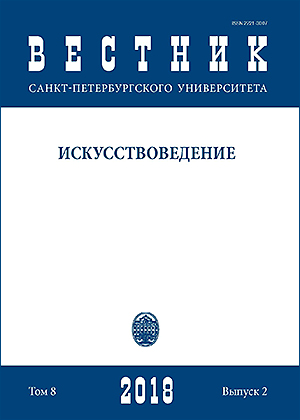Партименто как объект исследования в музыкальной науке XXI века
DOI:
https://doi.org/10.21638/11701/spbu15.2018.202Аннотация
В современных зарубежных исследованиях широко освещается итальянская клавирная практика партименто, которая была распространена в Европе в XVIII в. Объектом специального изучения она стала лишь с конца XX в. Несмотря на непрекращающийся рост публикаций, общее представление о партименто неоднозначно в силу сложности самого явления. Существование различных его трактовок (от гиперболизации его значения в музыке XVIII в. до отрицания) вызывает необходимость обратиться к особенностям научной рецепции этого феномена. В работах исследователей практика партименто раскрывается с разных сторон. Наибольшие разночтения связаны с осмыслением проблемы феномена партименто. Они простираются от объяснения этимологии самого слова до осмысления основных свойств практики: соотношения в ней инструктивной и художественной составляющих, черт импровизируемой и сочиняемой музыки, ее связи с практикой генерал-баса. Рассматриваются наиболее дискуссионные моменты, связанные с пониманием партименто.
Ключевые слова:
партименто, импровизация, basso continuo, клавирная музыка, музыкальная педагогика XVIII в., итальянская музыка XVIII в.
Скачивания
Библиографические ссылки
References
Загрузки
Опубликован
Как цитировать
Выпуск
Раздел
Лицензия
Статьи журнала «Вестник Санкт-Петербургского университета. Искусствоведение» находятся в открытом доступе и распространяются в соответствии с условиями Лицензионного Договора с Санкт-Петербургским государственным университетом, который бесплатно предоставляет авторам неограниченное распространение и самостоятельное архивирование.






